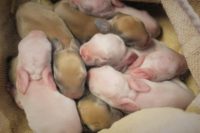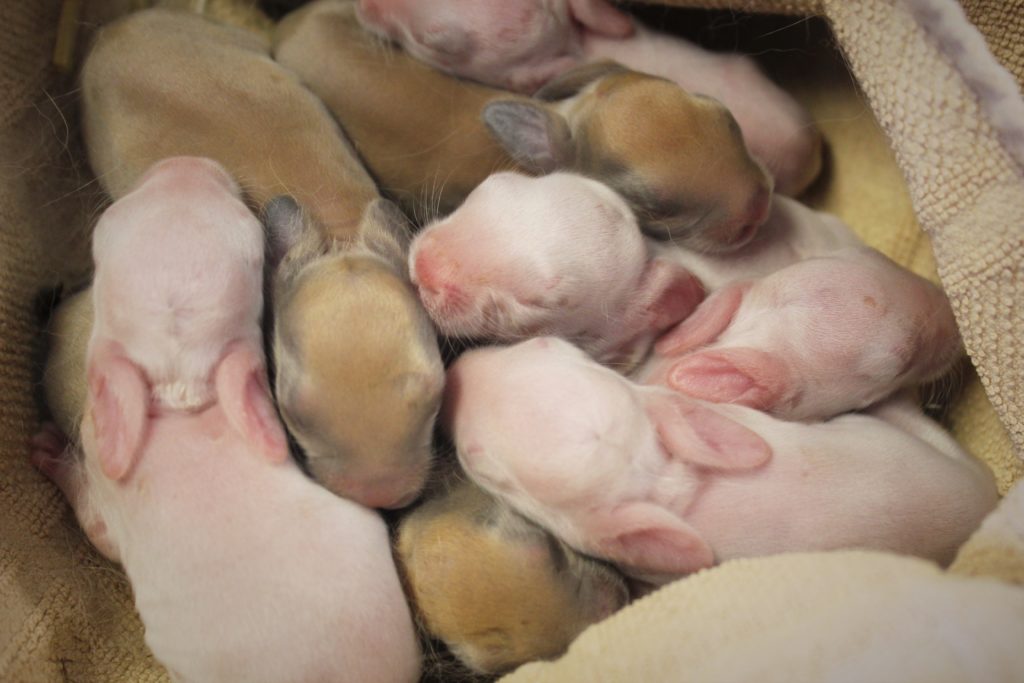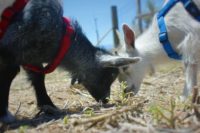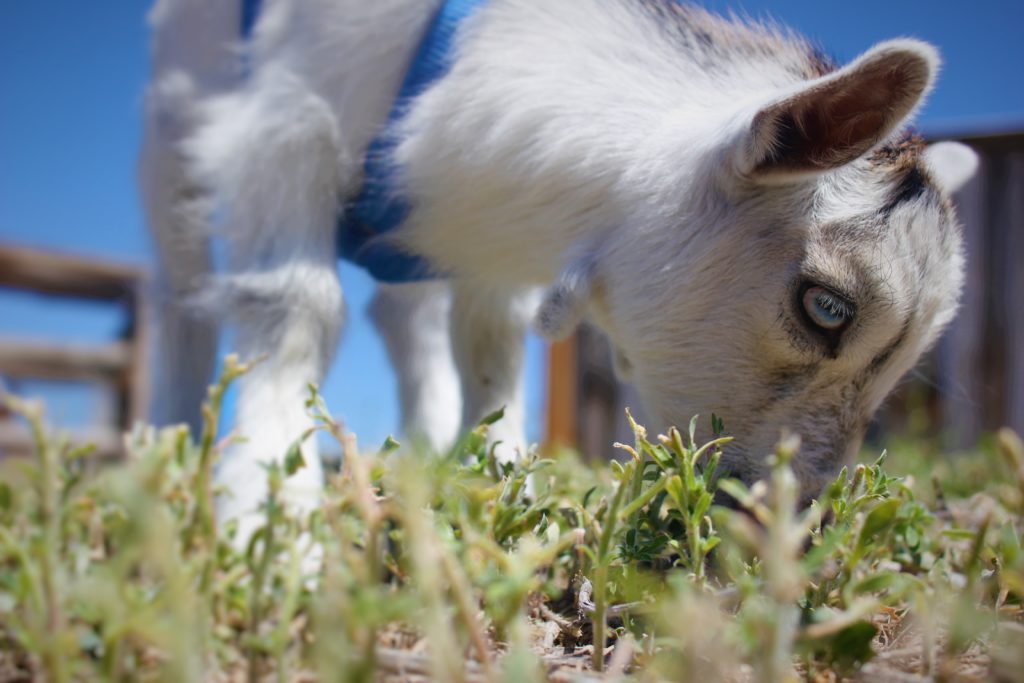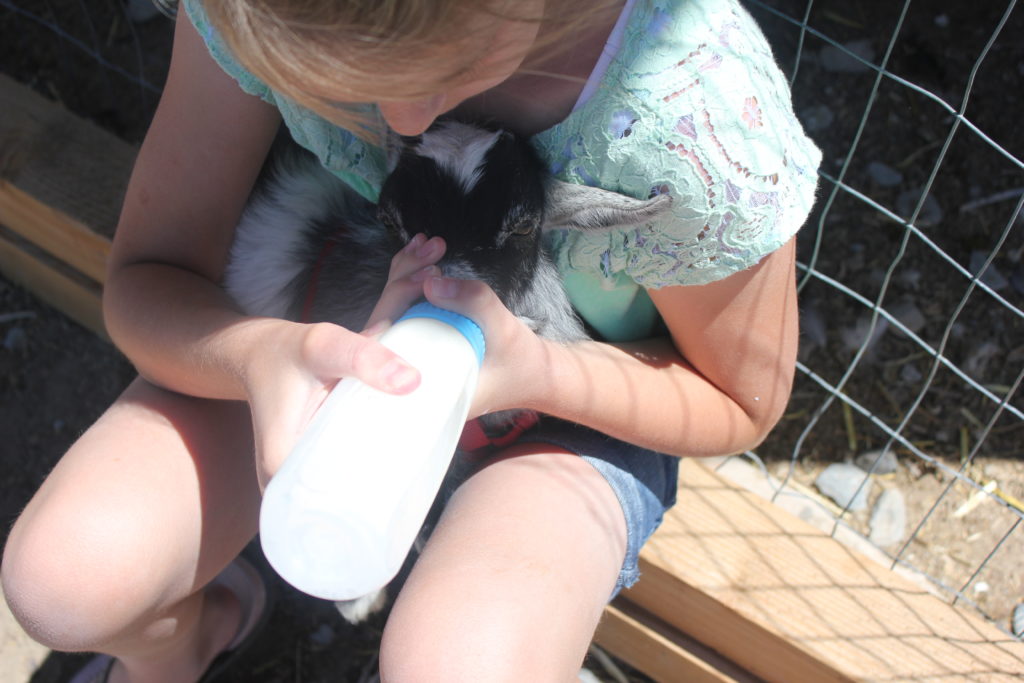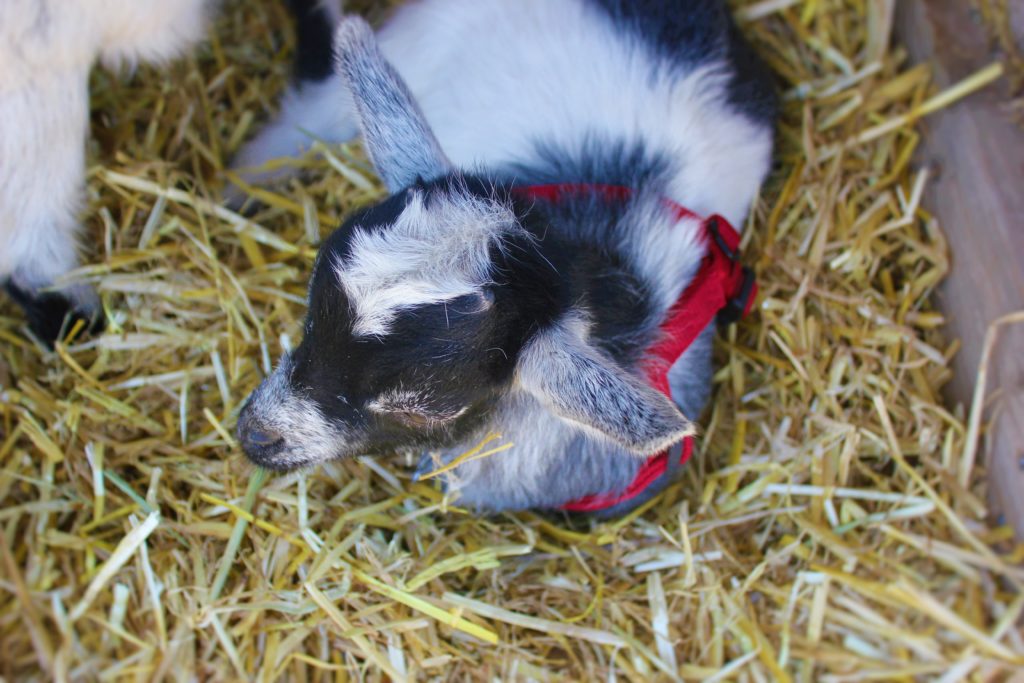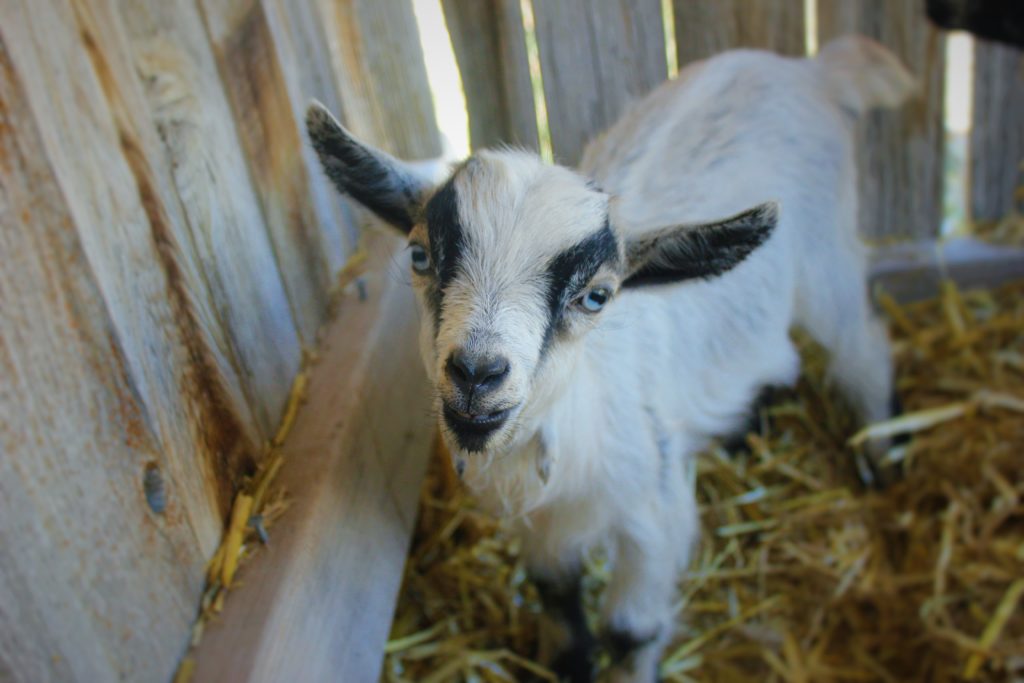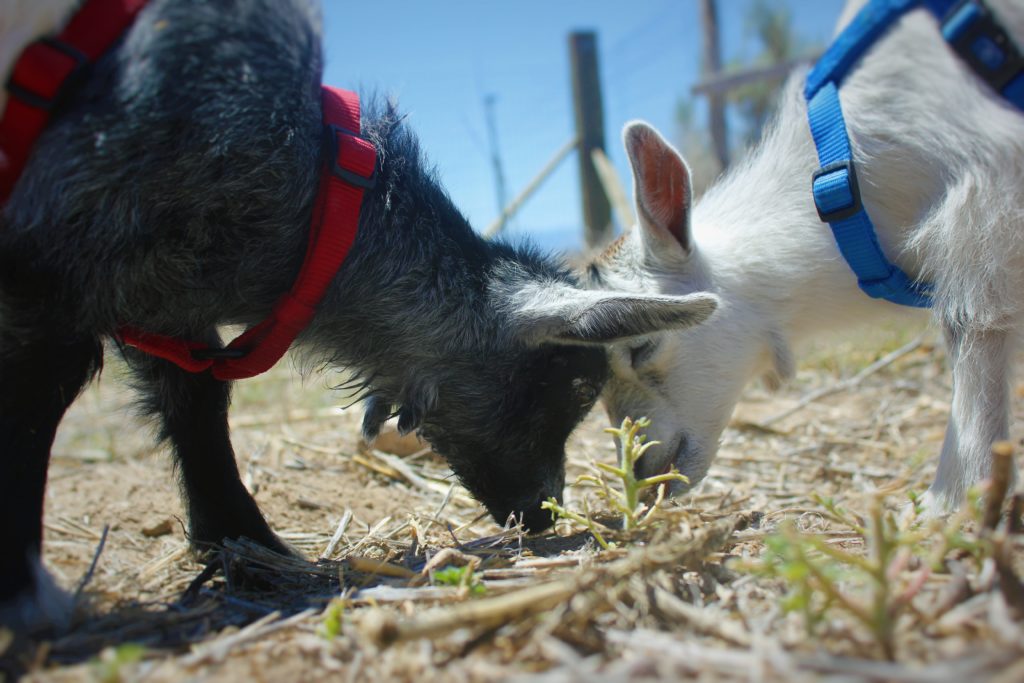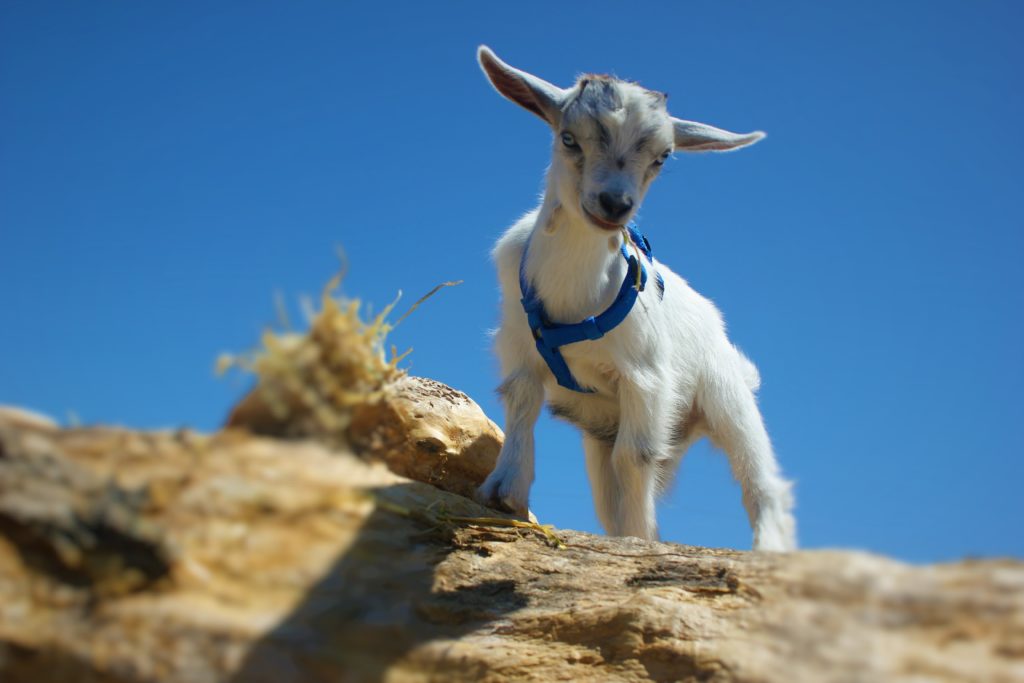One of my main jobs here on the farm, my main focus, what everything comes down to is the health of the soil. It doesn’t matter what the freeze dates are, the rates of germination, how many pounds of beans harvested per row if my soil isn’t healthy and nurtured. I can’t have big harvests, beautiful plants or nutritious thriving vegetables if my soil is dead. I spend a lot of time looking at dirt, putting my hands in dirt, observing my garden beds, analyzing and planning, sometimes for years down the road. I want good, rich, dark soil, full of organic matter and life, worms, mushrooms, mold and microbes. The problem is that we are in a desert and our soil doesn’t come that way naturally, therefore is takes a lot of planning and focused effort to achieve that in an organic healthy way.
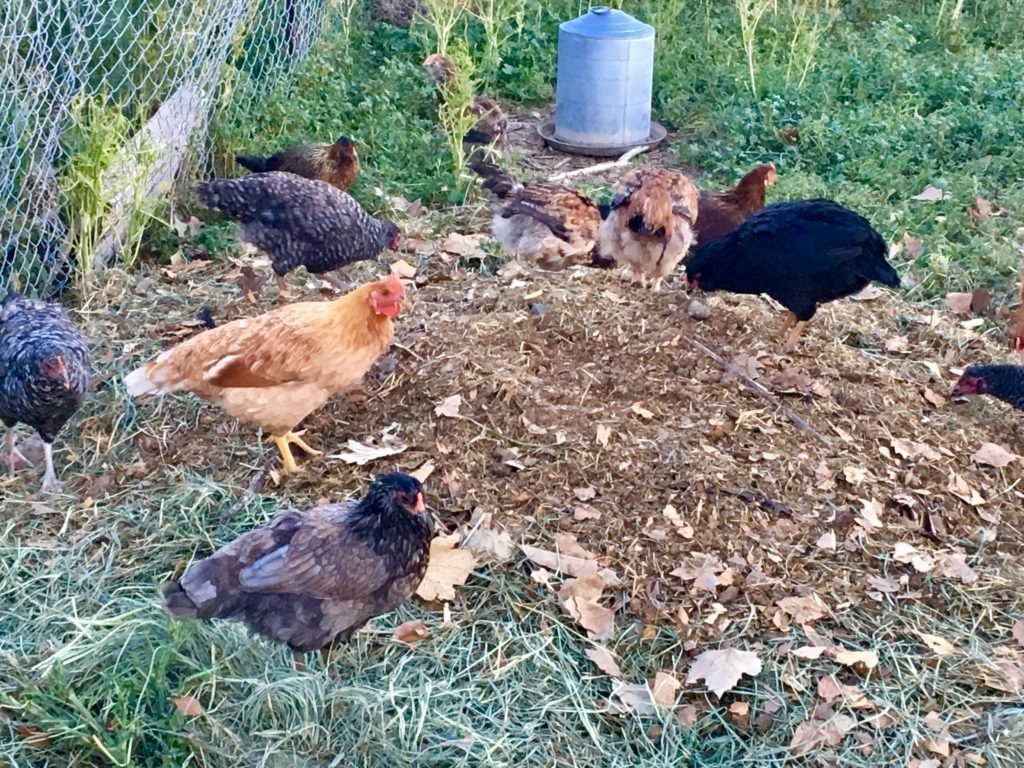
The ladies getting to work on a newly built compost pile.
To do this we use many different permaculture methods. One method is the classic composting, nothing organic goes to waste here, from kitchen scraps to weeds, it’s all recycled in some way to help enrich the land. We use chickens extensively in our composting program. We also compost in place and do traditional compost piles, but the chicken composting is what I’d like to talk about today.
In the chicken yard we make a simple pile: horse manure, goat manure and bedding, old leaves, kitchen scraps, weeds and lawn clippings (be cautious using lawn clipping in compost, if there is any weed killer on it, it can cause problems in the garden, I know I’ve experienced it first hand). We do this for a couple weeks, adding food scraps and weeds, especially those that have seeds. The chicken then scratch through the pile, mixing it, eating weed seeds and leaving their droppings to further enrich the compost. Every morning when my son goes out to do his chicken chores he rakes the pile up high and the chickens get to work mixing it all up again.
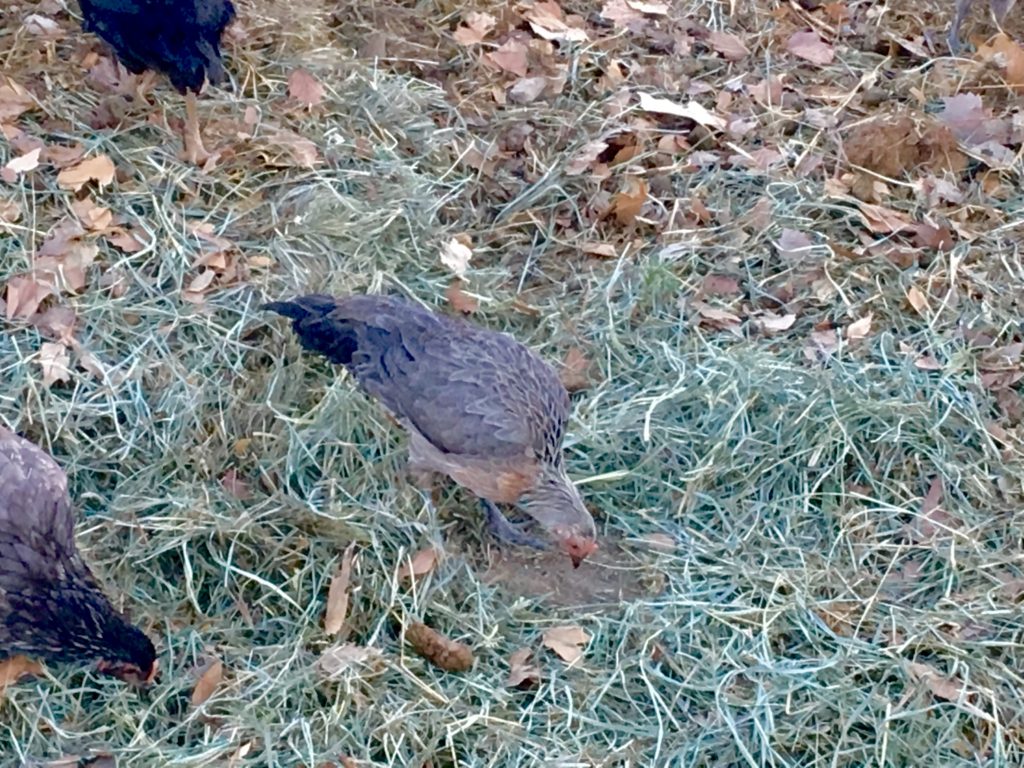
A pullet working on a new compost pile, she will help breakdown all those leaves and hay.
In about a week the pile looks like this picture below, and in two weeks it will be finished and ready to apply to the garden beds. About 10 days to 2 weeks after a pile is started I make a new one and so it goes through the season. Black gold made by my feathered friends and farm hands.
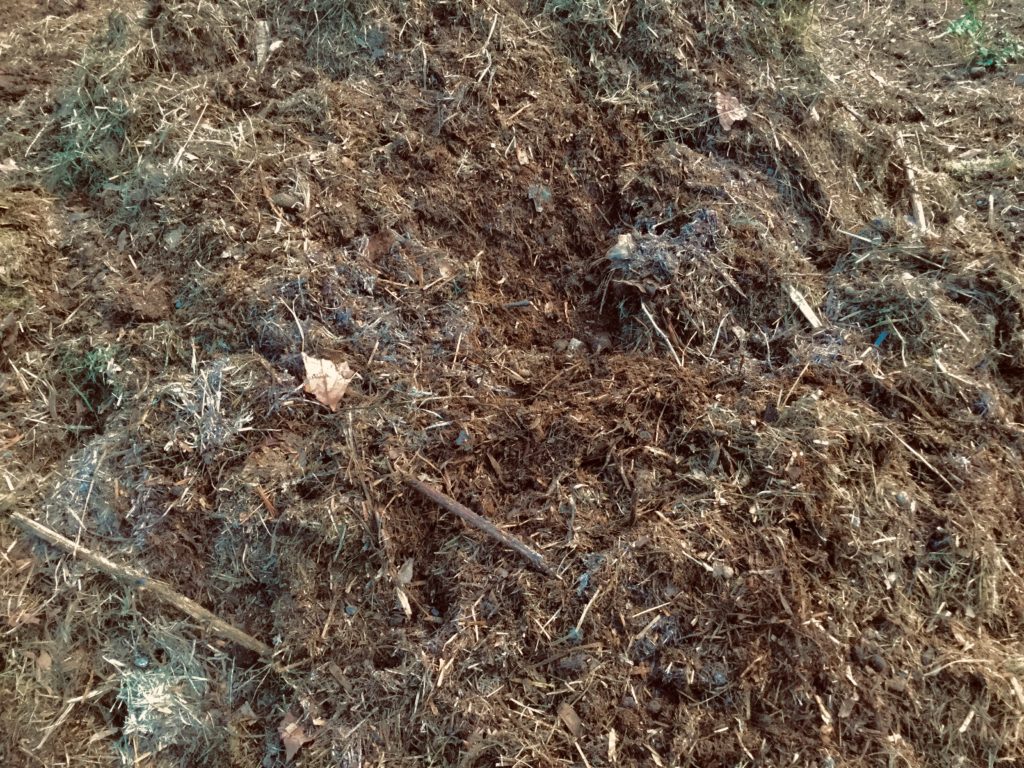
When done right the compost is hot to the touch and steams when the core is opened, this will help kill weed seeds and speeds up the compost process.
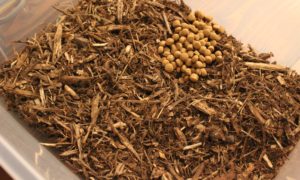 It is always a big experiment around here.
It is always a big experiment around here.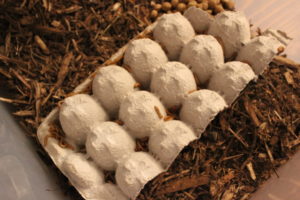 From what Dadzoo (or farmer Mike) has researched they are really easy to grow. They need some type of medium to craw around in, a food source, a water source and warmth.
From what Dadzoo (or farmer Mike) has researched they are really easy to grow. They need some type of medium to craw around in, a food source, a water source and warmth.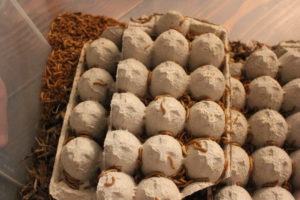 We prepared a big plastic tote with wood chips, dog food and some lettuce. We originally wanted to use wheat germ for food and bedding but it is taking awhile to get here so this is what we have for now.
We prepared a big plastic tote with wood chips, dog food and some lettuce. We originally wanted to use wheat germ for food and bedding but it is taking awhile to get here so this is what we have for now.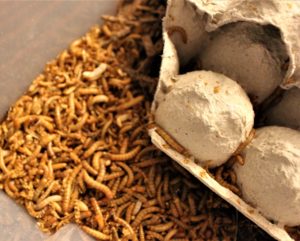 The new wiggly babies seems to like their home and hopefully we will soon see beetles, that will lay eggs, that will turn into meal worms, that will be fed to chickens or left grown into beetles.
The new wiggly babies seems to like their home and hopefully we will soon see beetles, that will lay eggs, that will turn into meal worms, that will be fed to chickens or left grown into beetles.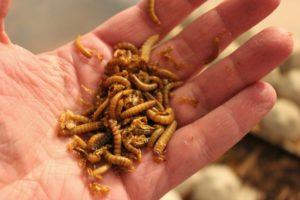

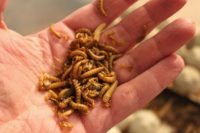
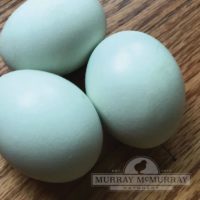
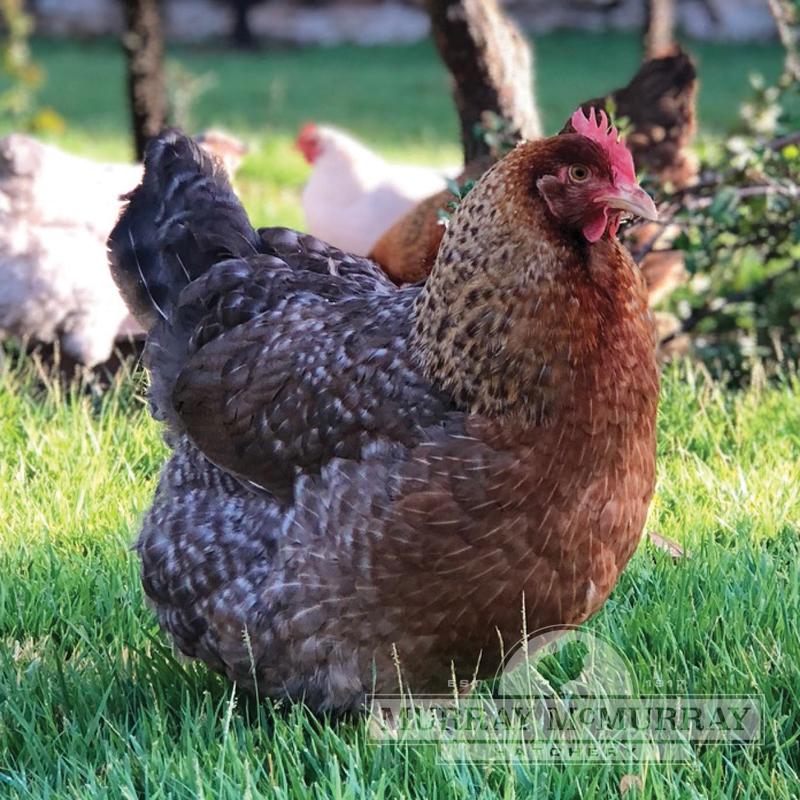
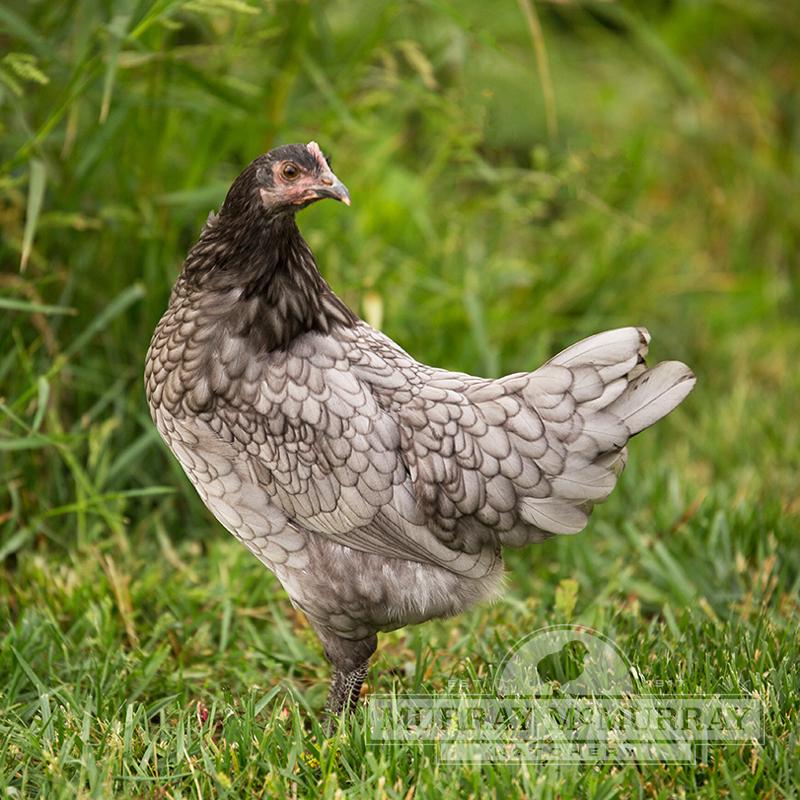
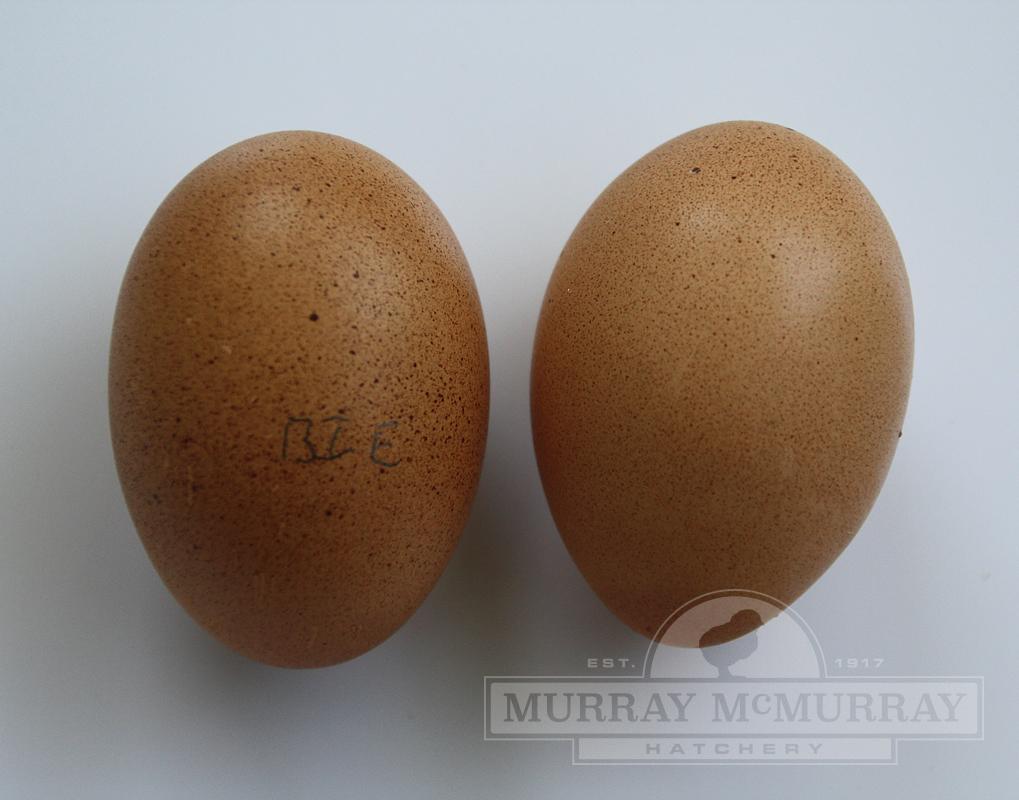
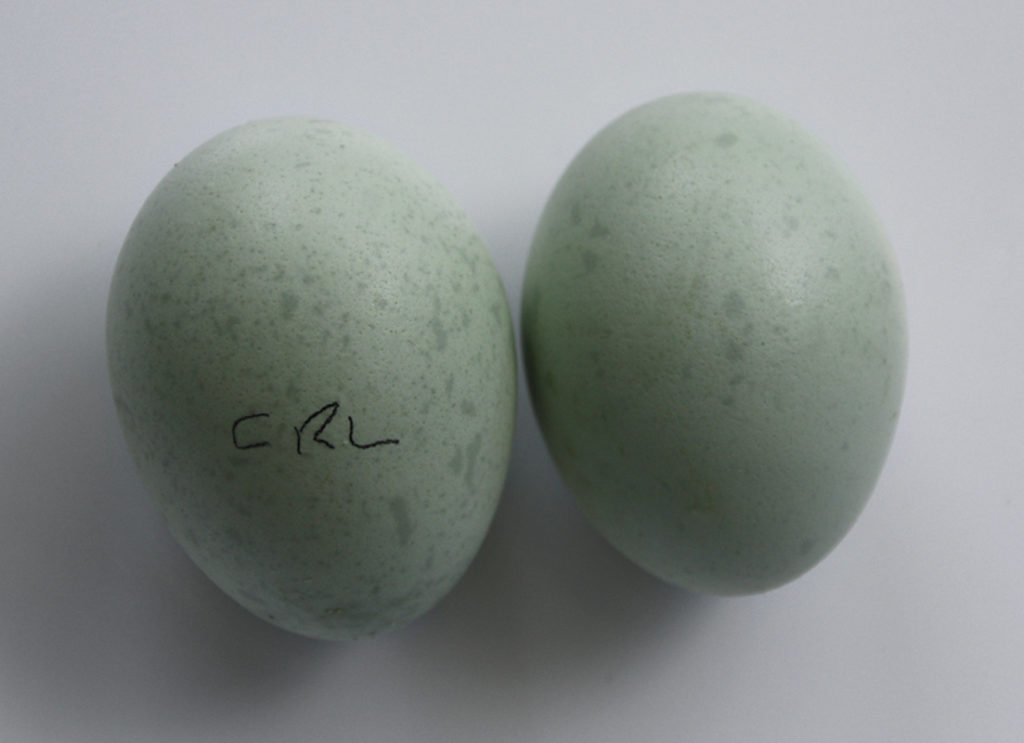
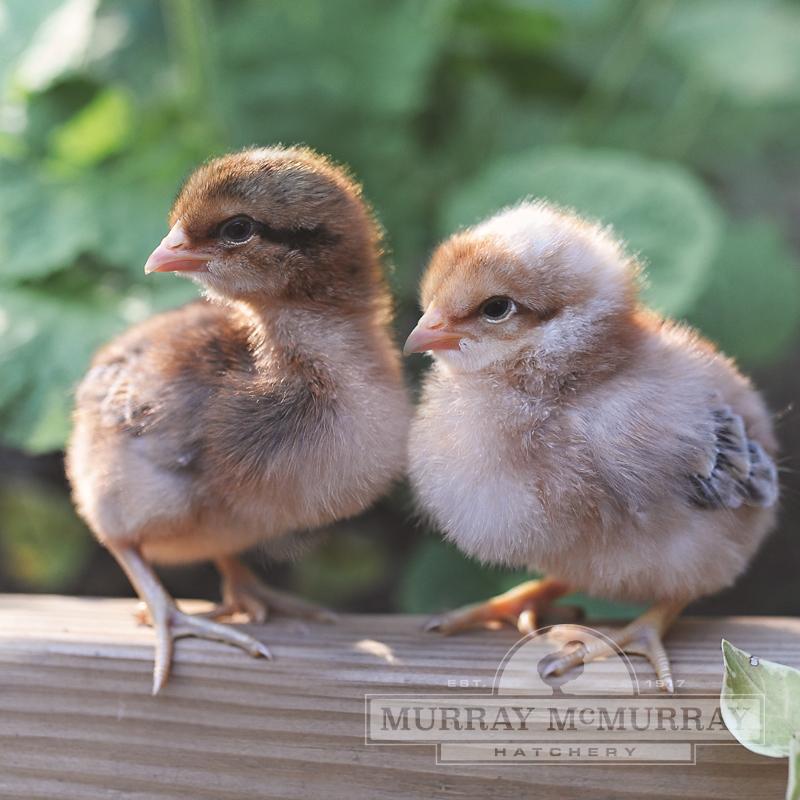
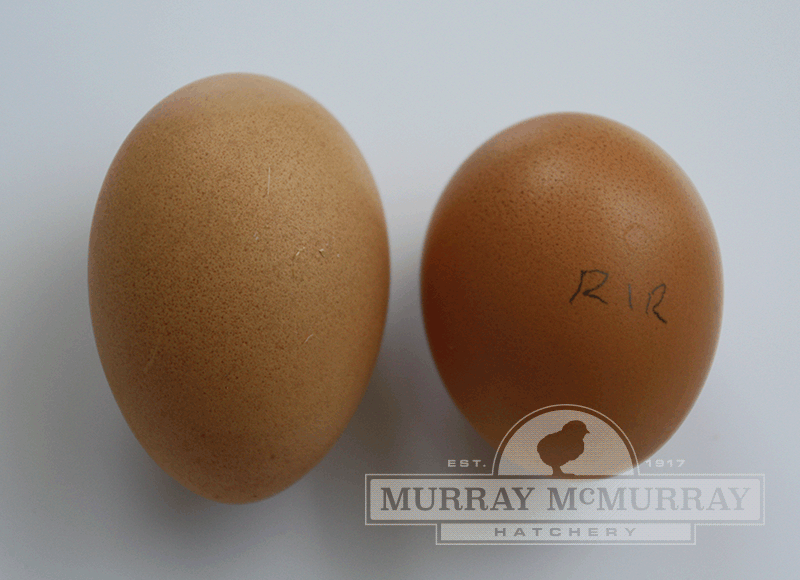
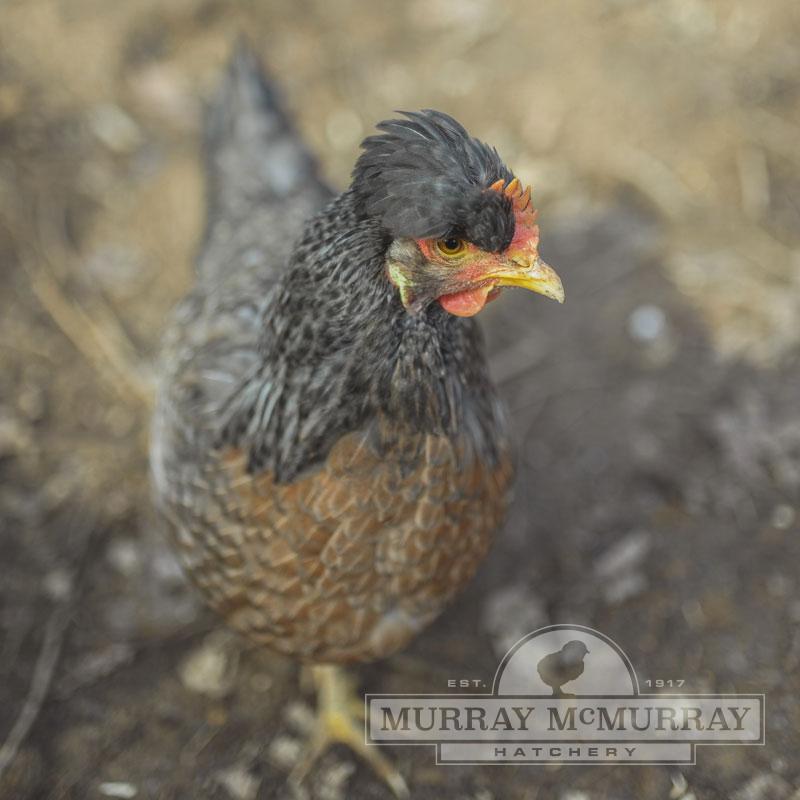
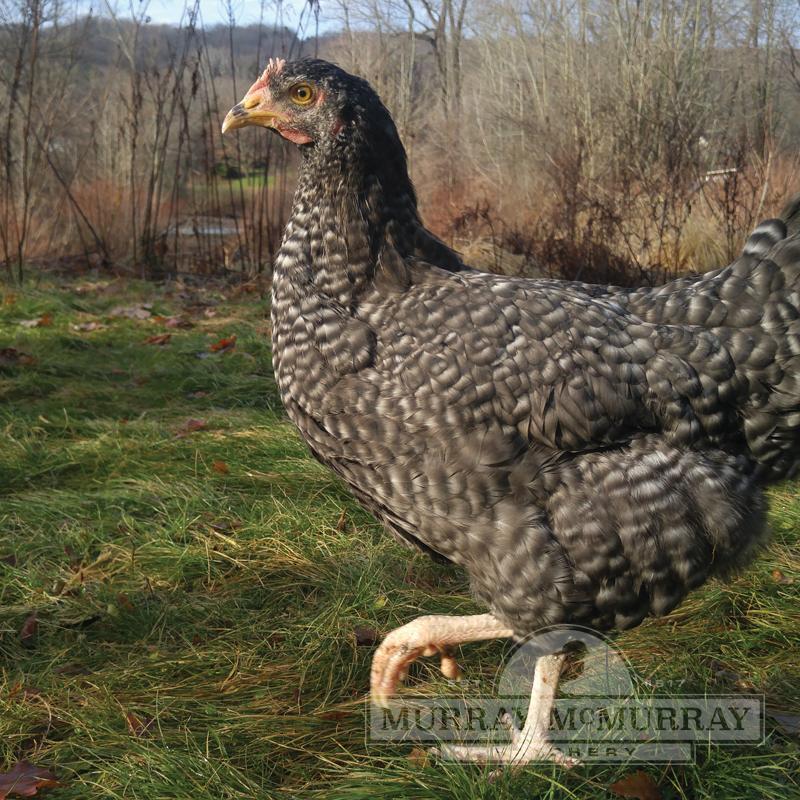
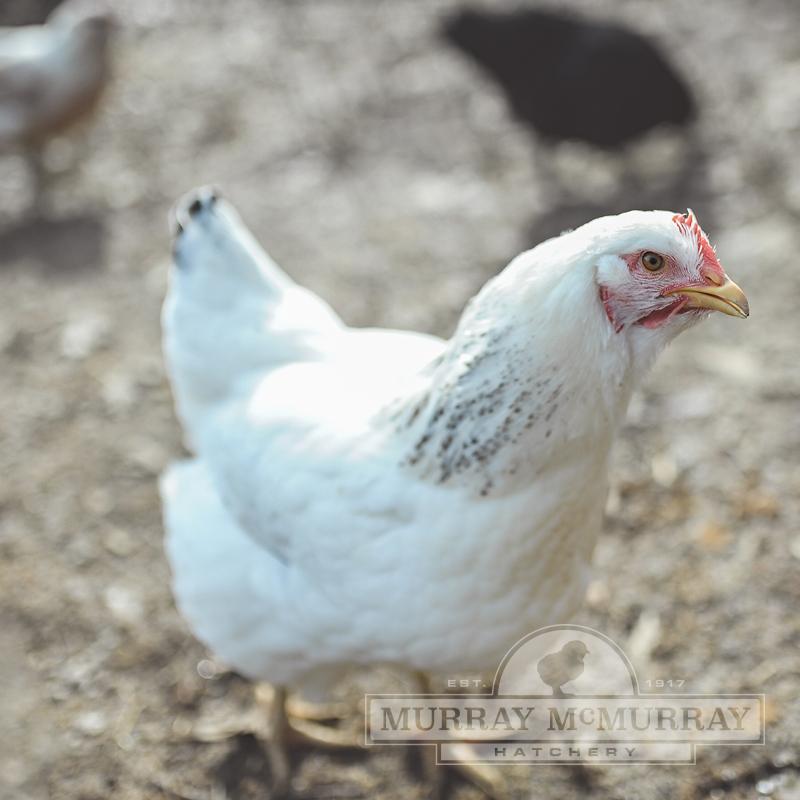
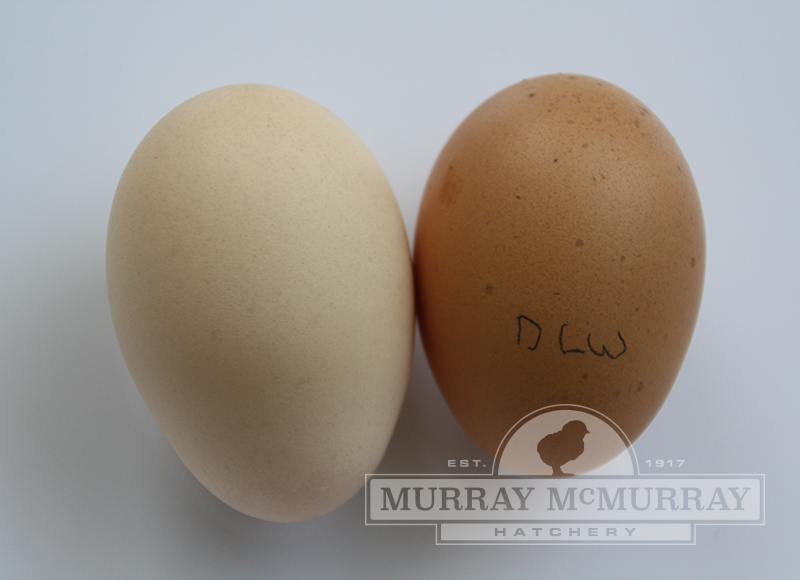
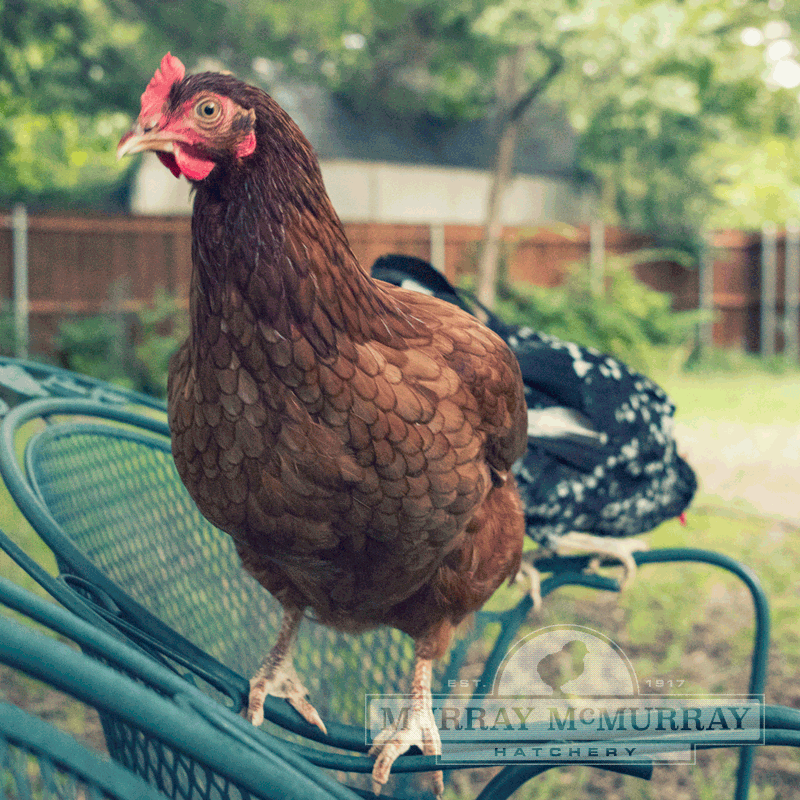
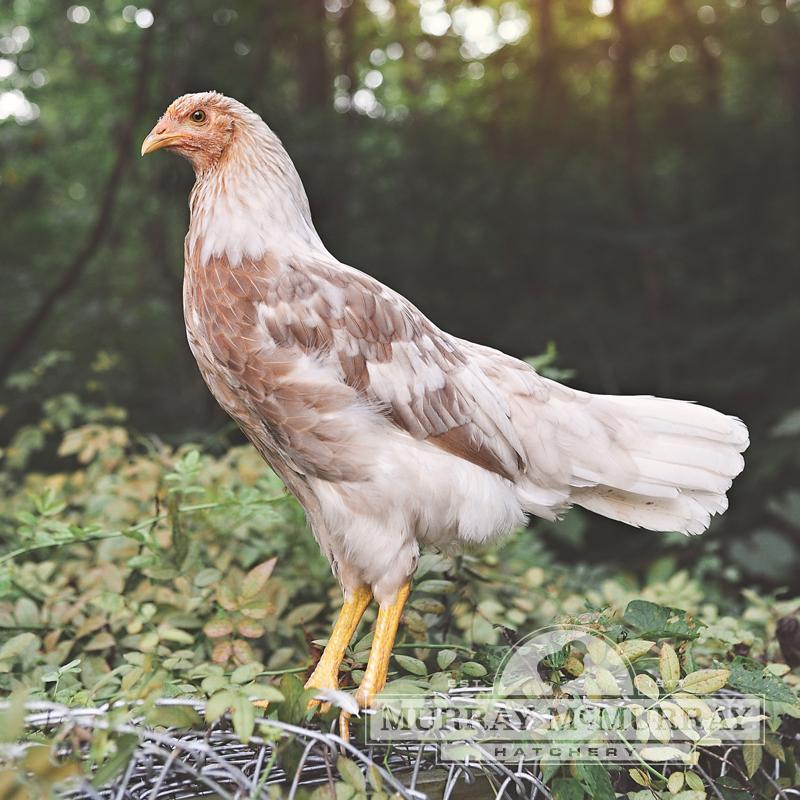
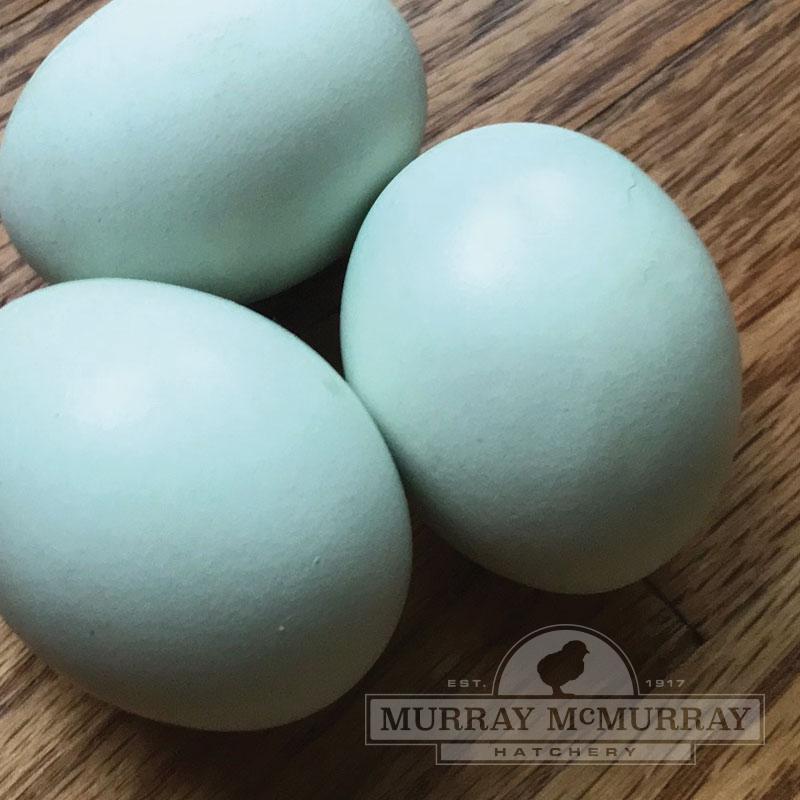
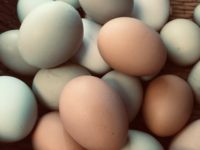
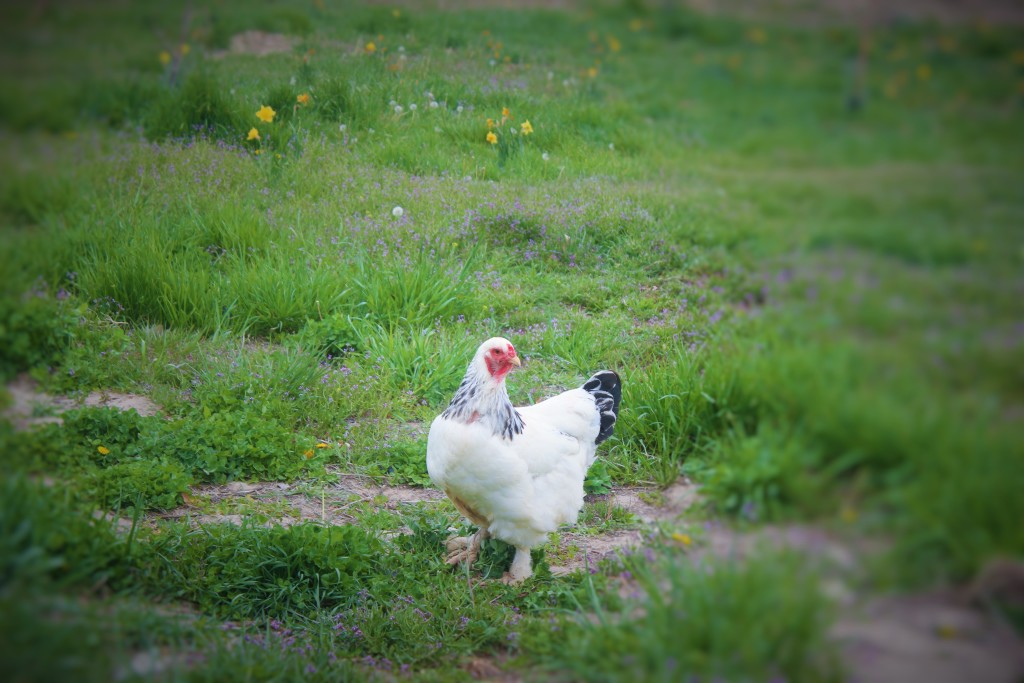
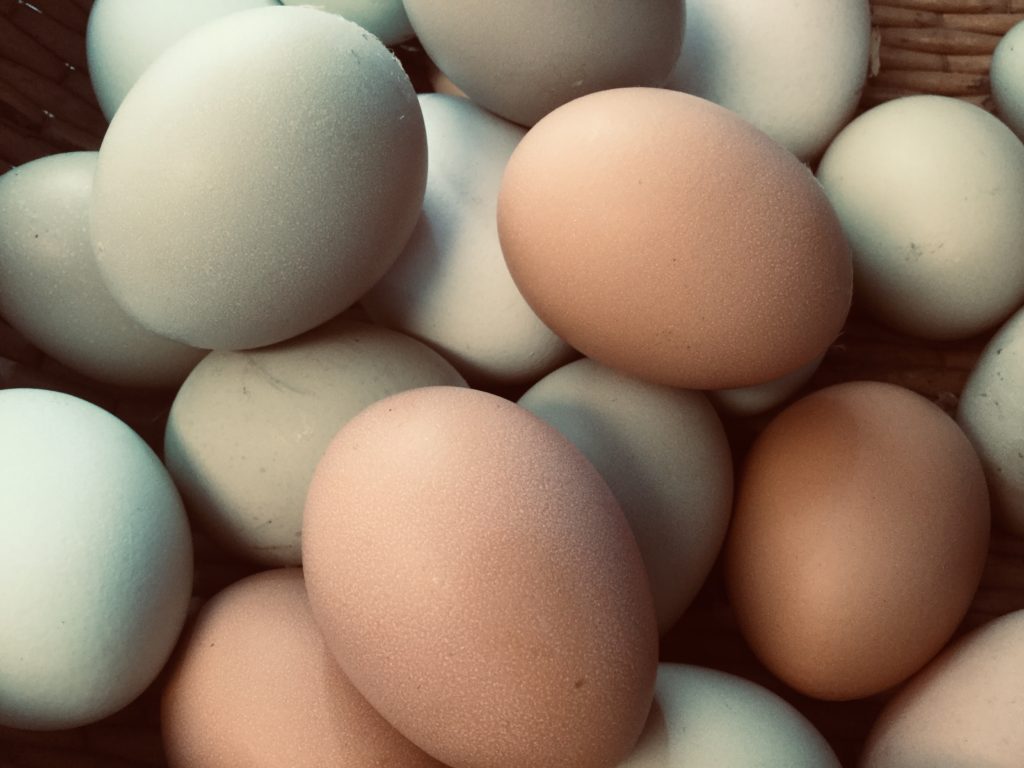
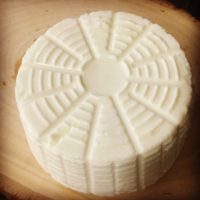
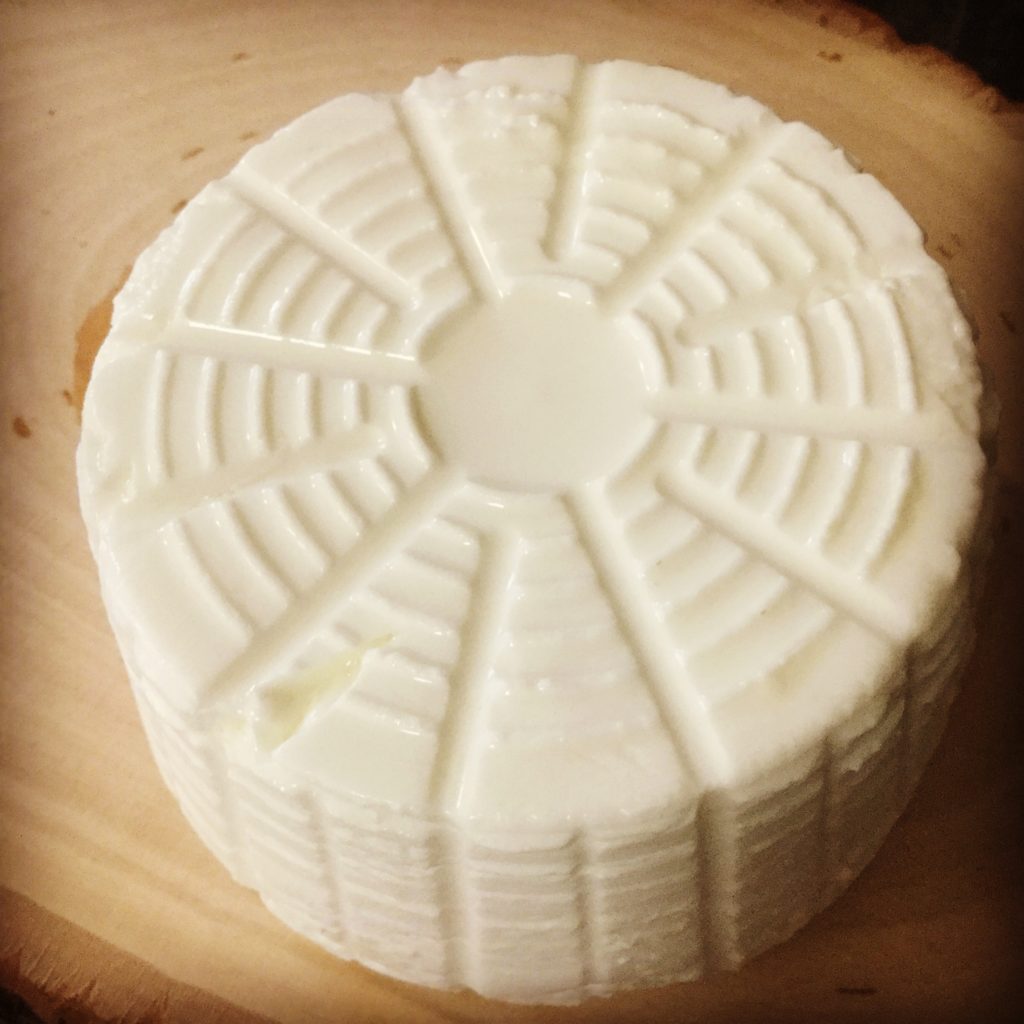 For a long time I’ve dreamed of owning my own dairy animals and making all the yummy dairy foods. My first try at soft goat cheese was a success! My children may never get to drink our goat milk again, I’m saving it all for cheese.
For a long time I’ve dreamed of owning my own dairy animals and making all the yummy dairy foods. My first try at soft goat cheese was a success! My children may never get to drink our goat milk again, I’m saving it all for cheese.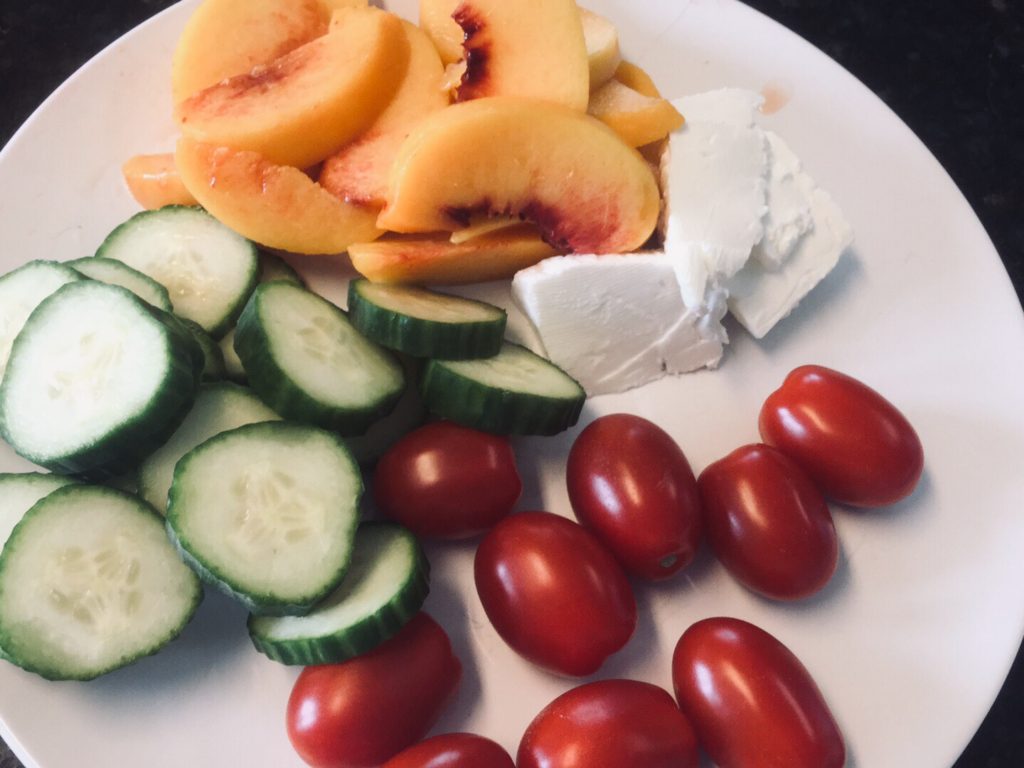 I think this may just be the most perfect summer lunch ever.
I think this may just be the most perfect summer lunch ever.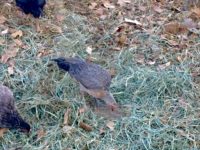



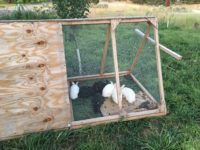
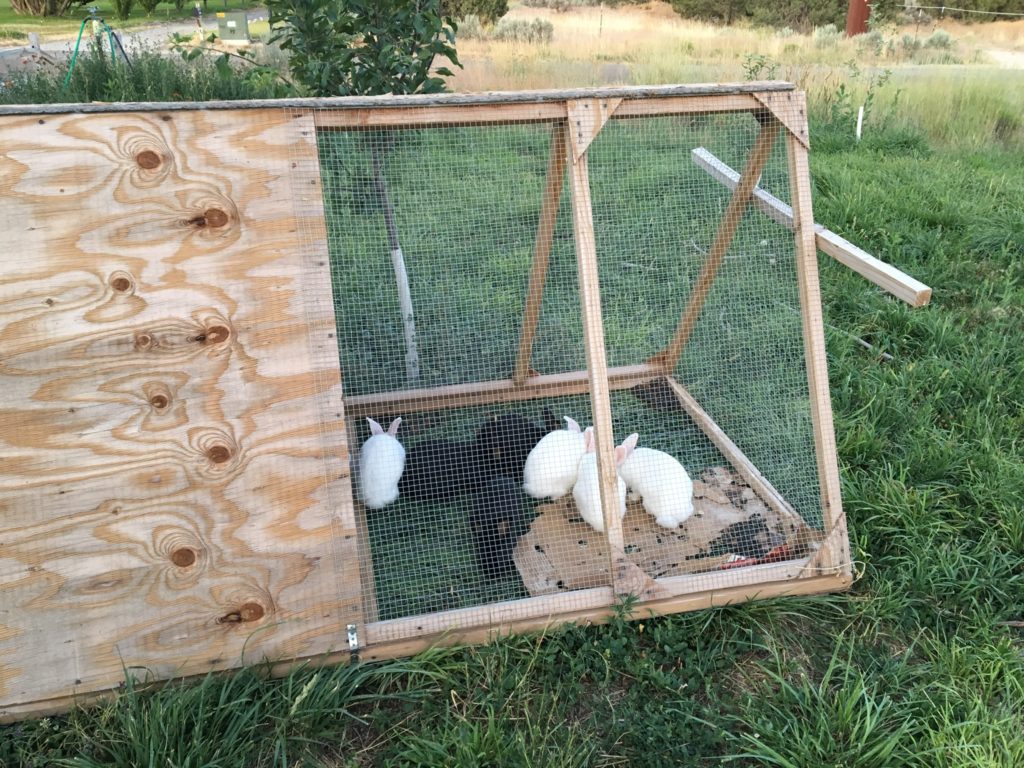
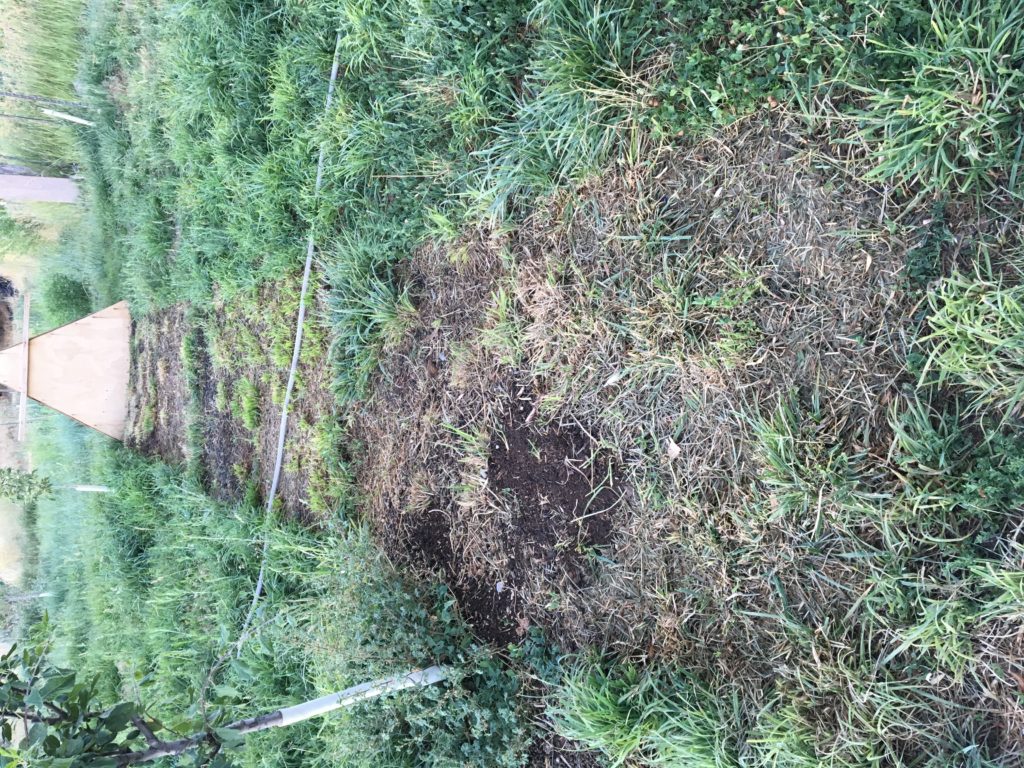
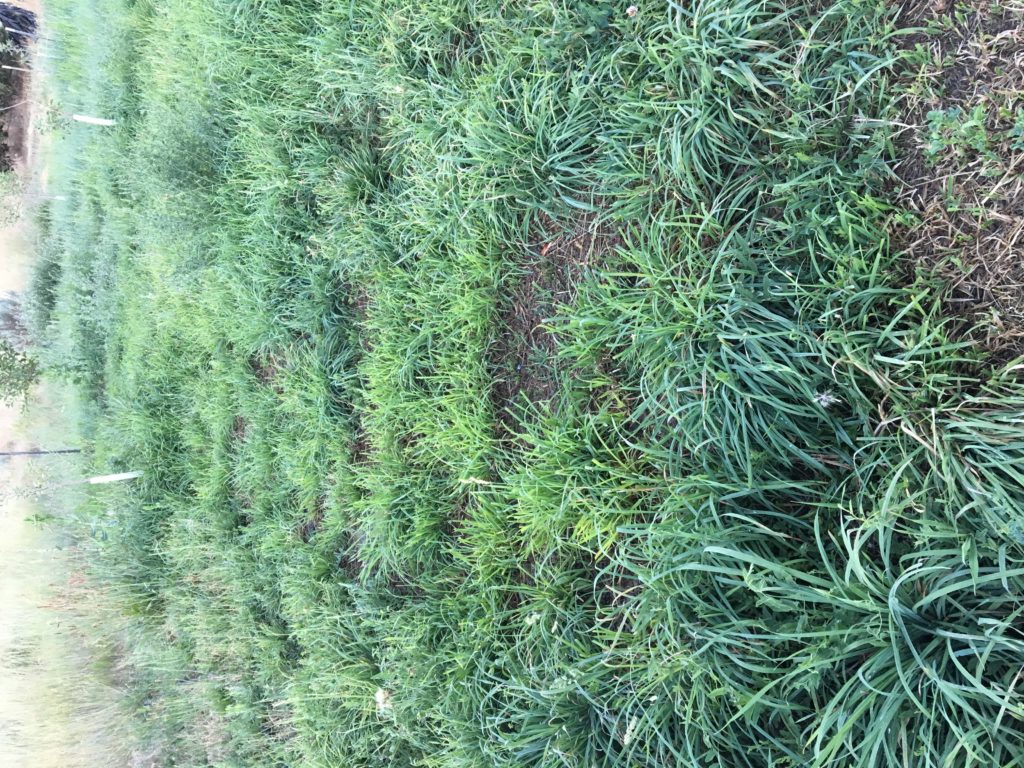
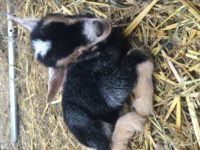
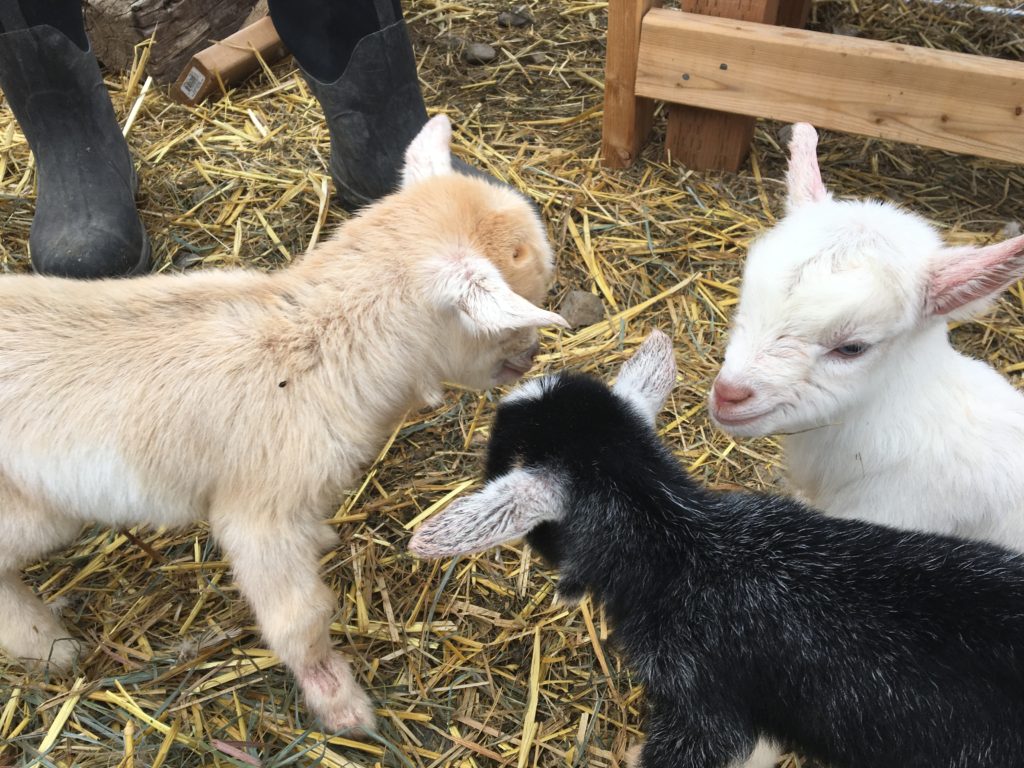
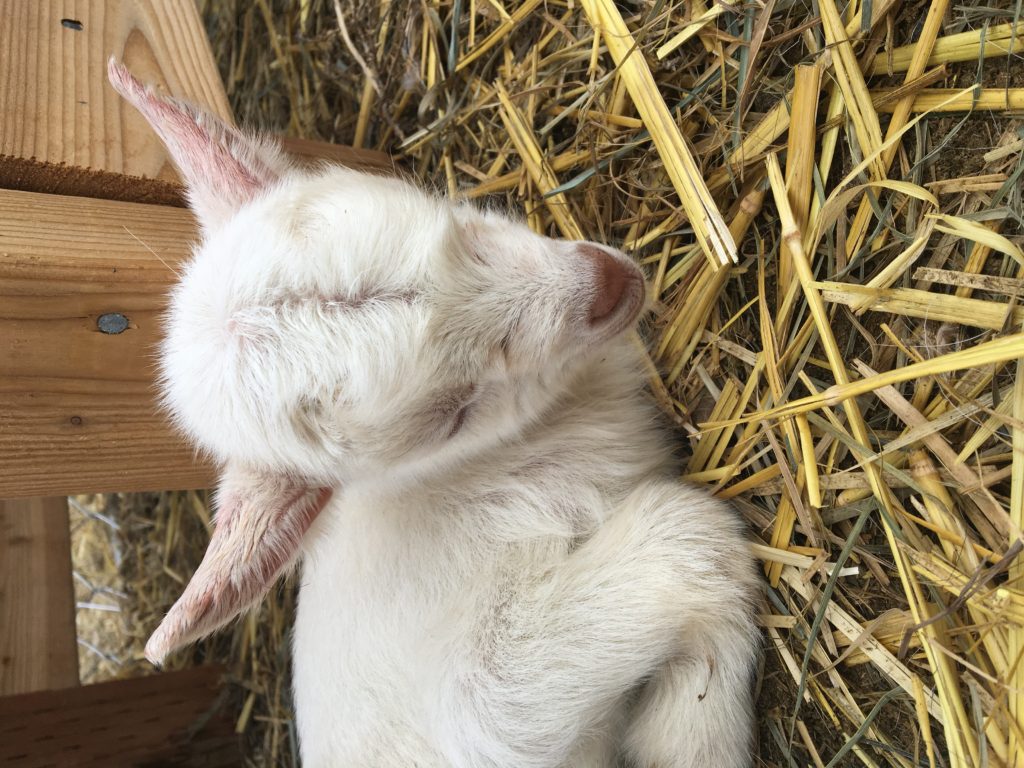
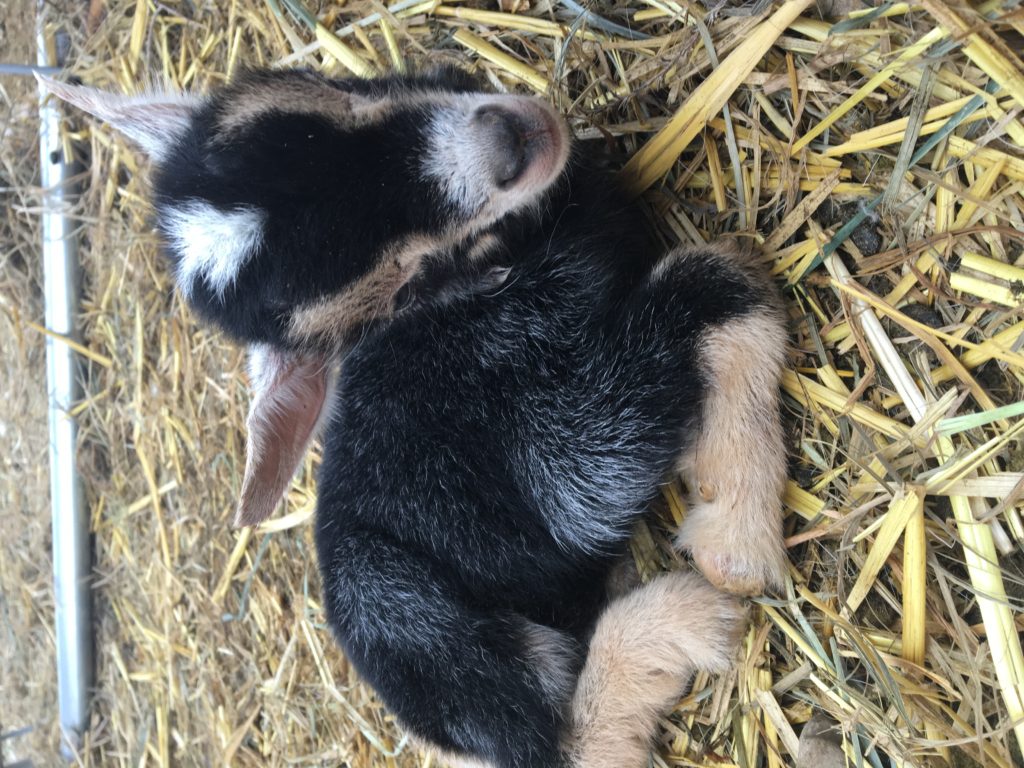
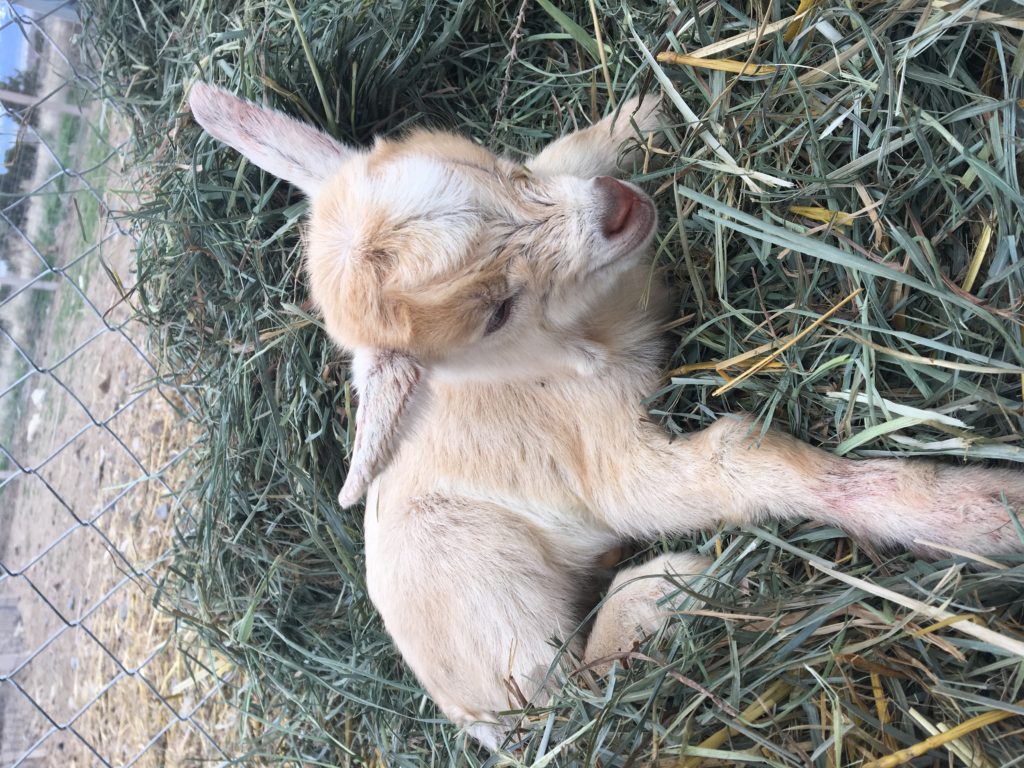
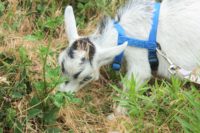
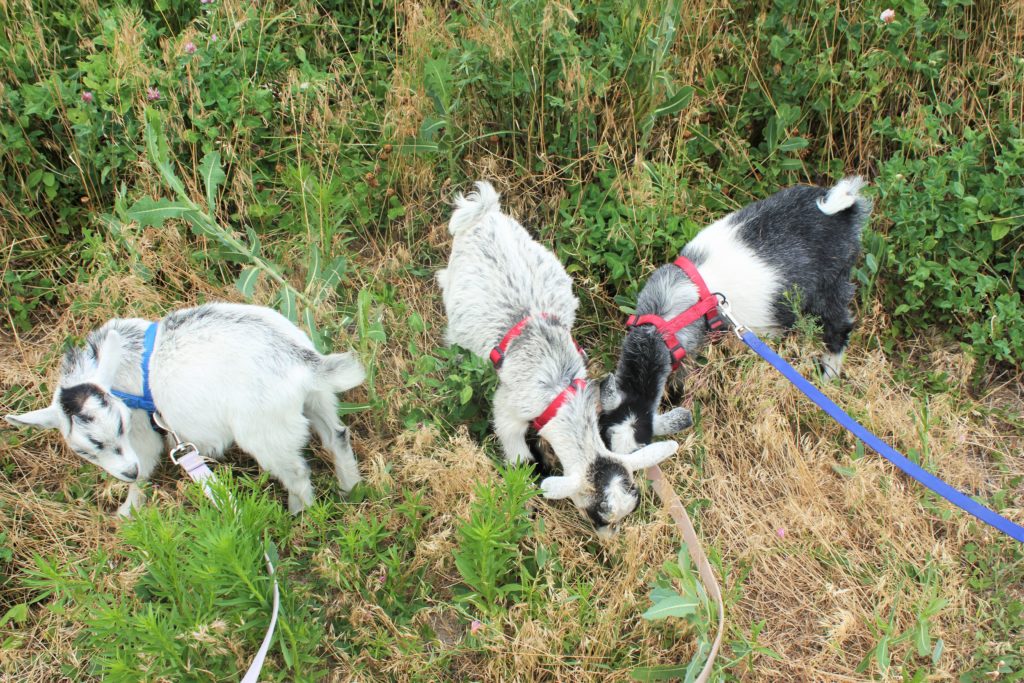
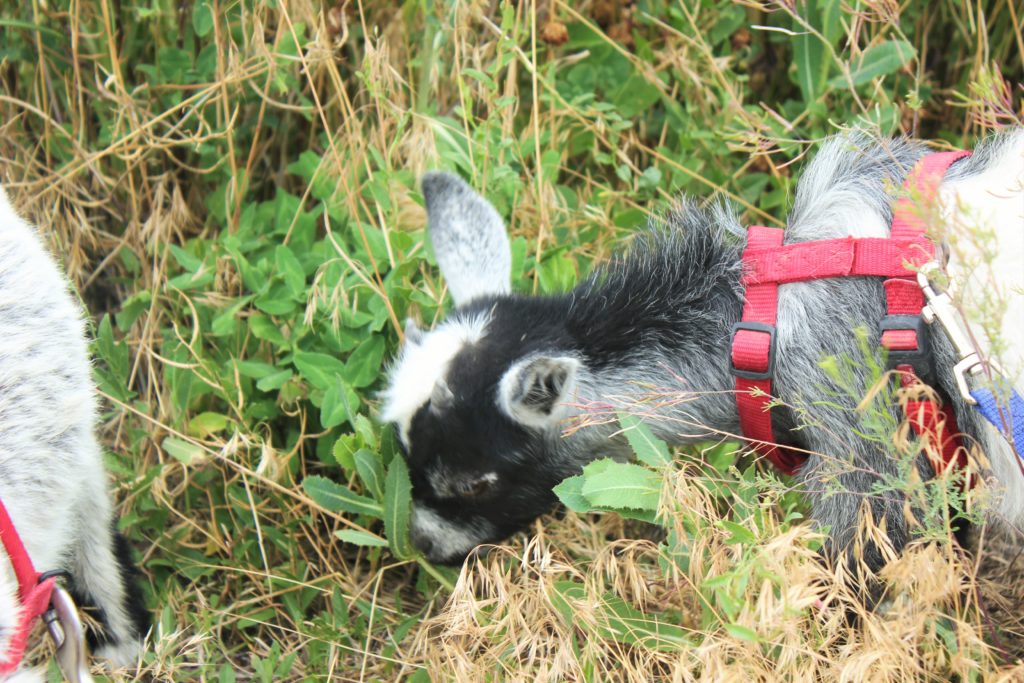
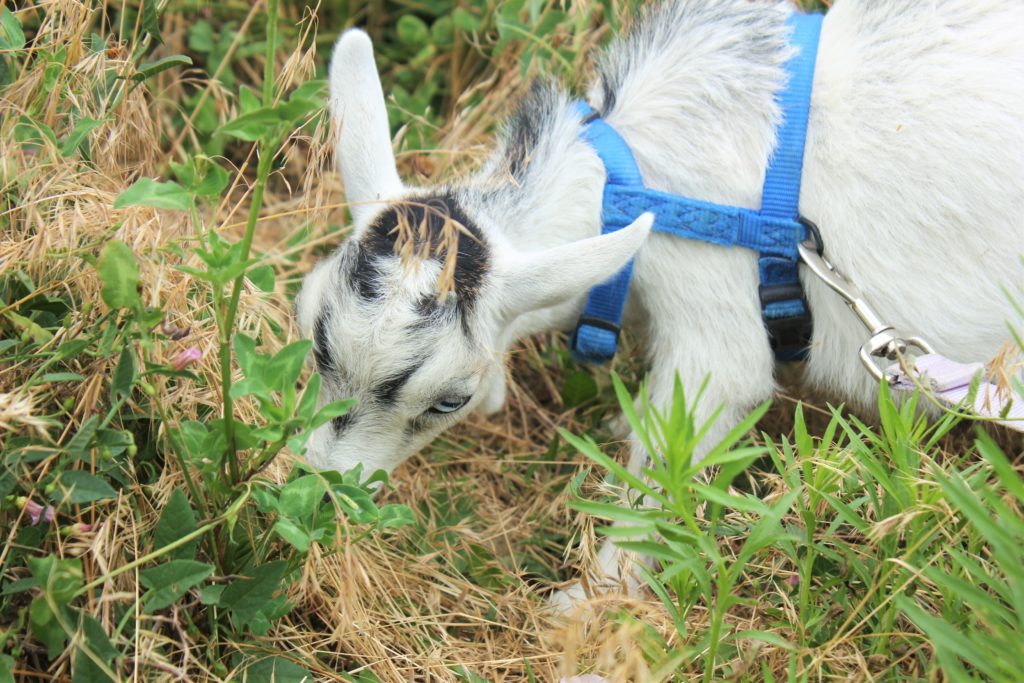 Here on our farm we don’t have vast pastures, we have small meadows and paddocks, but that same principle applies, just on a smaller scale. We set the goats out daily to graze, watching carefully so as not to over tax the land and then move our animals so the plot can rest and rejuvenate, making it more fertile and productive.
Here on our farm we don’t have vast pastures, we have small meadows and paddocks, but that same principle applies, just on a smaller scale. We set the goats out daily to graze, watching carefully so as not to over tax the land and then move our animals so the plot can rest and rejuvenate, making it more fertile and productive.